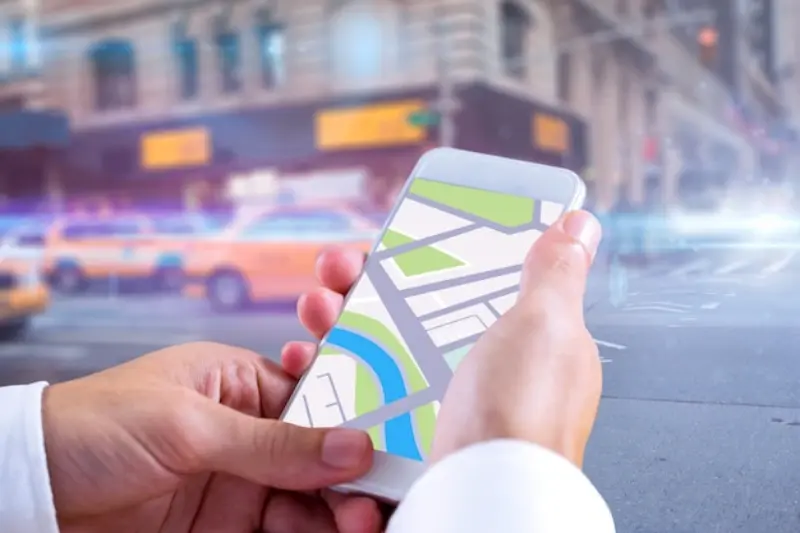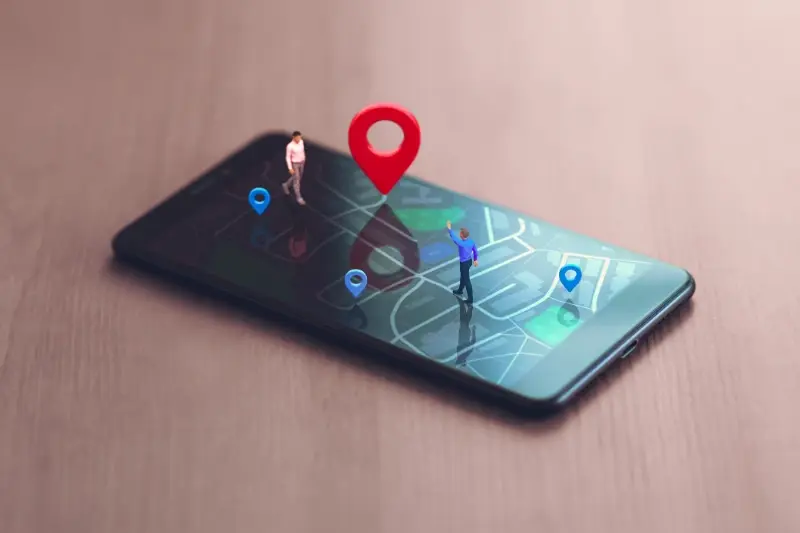Building Offline Maps: When Your App Loses Internet Connection
Picture yourself halfway up a mountain, GPS guiding you along an unfamiliar trail, when suddenly your phone loses signal. That moment when your reliable map app goes blank and you're left staring at a loading screen can be genuinely frightening. We've all been there—whether hiking remote paths, driving through patchy coverage areas, or travelling abroad where data costs make you want to switch everything off.
This is exactly why offline maps have become such a game-changer for mobile app developers. They're not just a nice-to-have feature anymore; they're becoming expected functionality. Users don't want to worry about losing their way when technology fails them, and frankly, they shouldn't have to.
The best navigation apps are the ones that work when you need them most, not just when you have perfect signal
Building offline maps means creating apps that download and store map data locally on the device, allowing GPS tracking and location services to function without any internet connection whatsoever. It's about map caching, smart data storage, and making mobile mapping work in the real world—where signal drops out, data runs low, and people still need to get where they're going. The technical challenges are significant, from managing storage space to keeping cached data current, but the payoff is massive. When your app works offline, you're not just building software; you're building reliability and trust into every journey your users take.
Understanding Offline Maps and Why They Matter
Offline maps are exactly what they sound like—maps that work without an internet connection. Your phone downloads map data when you have wifi or mobile signal, stores it locally, then shows you where you are even when you're completely cut off from the web. It's a feature that sounds simple but requires some serious technical planning to pull off properly.
Think about how often you've been caught without signal. You're driving through the countryside, walking in a national park, or travelling abroad where roaming charges would bankrupt you. Your standard mapping app becomes useless the moment those signal bars disappear. That's where location-based apps become a lifesaver—literally, in some cases.
The Real-World Impact
I've worked on apps for delivery drivers, hikers, and emergency services—all groups who can't afford to lose their navigation when connectivity drops. A delivery driver stuck without directions costs money and frustrates customers. A hiker lost in the mountains faces genuine danger. Emergency responders need to reach locations regardless of network coverage—particularly important for humanitarian crisis response where reliable communication can save lives.
But it's not just about extreme situations. Everyday scenarios benefit too: underground car parks where GPS signals struggle; busy events where networks get overwhelmed; international travel where data costs are prohibitive. Users expect apps to work everywhere, not just where there's perfect 4G coverage.
Beyond Just Pretty Pictures
Good offline mapping isn't just about showing a static image of streets. Users need search functionality, route planning, and real-time positioning—all working without internet. This means pre-downloading not just map tiles but also points of interest, address databases, and routing algorithms. The technical complexity grows quickly when you start thinking about keeping this data updated and managing storage space efficiently.
How Map Caching Works Behind the Scenes
Right, let's talk about what actually happens when your app downloads and stores map data for offline use. Map caching is basically your phone downloading small pieces of map information—called tiles—and keeping them stored locally so you can access them later without an internet connection.
Think of map tiles like puzzle pieces. Each tile covers a specific area and zoom level of the map. When you're viewing London at street level, your app downloads different tiles than when you're looking at the whole of England from a zoomed-out view. The system is quite clever; it only downloads what you need for the areas and zoom levels you're likely to use.
Storage and Compression
Map data gets compressed before it's stored on your device—and I mean really compressed. A single tile might contain information about roads, buildings, landmarks, and terrain, but it's squeezed down to just a few kilobytes. Your phone stores these tiles in a database that can be accessed instantly, even when you're completely offline.
Most modern smartphones can store thousands of map tiles without significantly impacting storage space, but always give users control over how much data they want to cache offline.
Smart Caching Strategies
The best offline mapping apps don't just randomly cache tiles. They use smart algorithms to predict which areas you're most likely to need. Some apps cache along your planned route, others cache based on your location history or popular areas in your region. This selective approach means you get maximum coverage without filling up your phone's storage with unused map data.
GPS Technology Without Internet Connection
Here's what catches most people off guard—your phone's GPS works perfectly fine without any internet connection at all. The Global Positioning System doesn't rely on your mobile data or WiFi to figure out where you are; it listens to satellites orbiting overhead. Those satellites are constantly broadcasting signals, and your device uses those signals to calculate its exact position.
The confusion comes from how most mapping apps work. When you open Google Maps or Apple Maps, they need internet to download the visual map tiles, search for addresses, and get real-time traffic updates. But the actual positioning? That's happening independently through GPS hardware built into your phone. Recent iOS updates have actually improved offline GPS functionality significantly.
How GPS Works in Offline Mode
Your device needs to receive signals from at least four satellites to determine your location accurately. Three satellites give you your position on Earth's surface, whilst the fourth helps calculate altitude and improves accuracy. This process—called triangulation—happens entirely offline.
The catch is that GPS can take longer to get your first location fix when you're offline. Normally, your phone downloads assistance data from the internet that helps speed up this process. Without internet, your device has to collect all the satellite information from scratch, which might take several minutes rather than seconds.
Battery and Performance Considerations
Running GPS without internet assistance does drain your battery faster. Your phone works harder to maintain satellite connections and calculate positions. Here are the main factors affecting GPS performance offline:
- Weather conditions and cloud cover
- Buildings and dense urban areas blocking signals
- How long since your last GPS fix
- Whether you're moving or stationary
For app developers, understanding this separation between positioning and mapping is crucial. You can build location features that work anywhere—even in remote areas with no mobile coverage—as long as you design around GPS limitations.
Building Location Services That Work Anywhere
Creating location services that function properly without internet connection isn't just about having offline maps—it's about building a complete system that users can rely on when they're truly disconnected. The GPS chip in your phone works independently of your data connection, but that's only half the story. Your app needs to be smart enough to handle position updates, route calculations, and navigation instructions without any help from the cloud.
The trickiest part is managing the transition between online and offline modes. Users shouldn't even notice when their connection drops; the app should seamlessly switch to cached data and continue providing accurate location information. This is where having a solid mobile app strategy becomes crucial for planning these complex features from the outset.
Making Navigation Work Without Data
Building offline navigation requires your app to calculate routes locally on the device. This is computationally intensive work that online mapping services like Google Maps handle on powerful servers. Your mobile app needs lightweight routing algorithms that can run efficiently on a phone's processor whilst still providing accurate directions.
The best offline location services are the ones users never think about—they just work, whether you're in central London or the Scottish Highlands with no signal
Battery management becomes critical too. Continuous GPS tracking drains power quickly, so implementing smart location sampling—adjusting frequency based on movement speed and battery level—keeps your app useful throughout long journeys. The goal is creating location services so reliable that users trust them completely, even when venturing into areas where mobile coverage simply doesn't exist.
Common Challenges in Mobile Mapping Development
Building offline maps isn't just about downloading some data and calling it a day—there are plenty of technical hurdles that can trip up even experienced developers. Storage space is probably the biggest headache you'll face. Maps contain massive amounts of data, and users don't want apps that eat up half their phone's memory.
Battery drain is another beast altogether. GPS chips are power-hungry little things, and when you combine that with processors working overtime to render complex map tiles, your users' batteries can disappear faster than they'd like. We've learnt that smart caching and selective GPS polling can help, but it's a balancing act between accuracy and power consumption.
Data Synchronisation Problems
Getting fresh map data to users when they do have internet connection is trickier than it sounds. Roads change, new buildings pop up, and businesses close down—your offline maps need updating without breaking the user experience. Poor sync logic can leave users with outdated information or, worse, corrupted map data that makes navigation impossible.
Platform-Specific Limitations
Different mobile operating systems handle background processing, memory management, and file storage in their own unique ways. What works perfectly on Android might struggle on iOS, and vice versa. Understanding iOS development costs and timelines becomes essential when budgeting for these complex mapping features. Here are the main technical challenges we see repeatedly:
- Memory limitations forcing developers to choose between map detail and performance
- Background processing restrictions that interrupt map downloads
- GPS accuracy variations between different device manufacturers
- File system limitations affecting how much map data can be stored locally
- Network switching between WiFi and mobile data causing sync failures
The good news? Most of these challenges have well-established solutions—you just need to plan for them from the start rather than treating them as afterthoughts. This is particularly important when considering app updates and modifications down the line.
Conclusion
Building offline maps isn't just about storing a few tiles on someone's phone—it's about creating apps that work when the world doesn't cooperate. I've worked on location-based apps where the client initially thought GPS and internet were the same thing (they're not, by the way) and others where they assumed map caching was as simple as downloading a few images. The reality is much more complex, but also much more rewarding when you get it right.
The technical challenges we've covered—from managing storage space to handling coordinate systems—might seem daunting at first. But here's what I've learned: users don't care about the complexity behind the scenes. They just want their app to work when they're standing in the middle of nowhere with no signal bars. That's the bar we need to meet.
What makes offline mapping particularly interesting is how it combines old technology (GPS has been around for decades) with modern mobile capabilities. Your phone can pinpoint your location using satellites whilst displaying beautifully rendered maps that were downloaded hours earlier. It's quite remarkable when you think about it.
The most successful location-based apps I've helped build share one common trait: they anticipate when users will need offline functionality before the users even realise it themselves. Smart pre-loading of map data, efficient storage management, and seamless switching between online and offline modes—these aren't just nice features, they're what separate good apps from great ones.
Whether you're building a hiking app, a delivery service, or something completely different, remember that reliable location services aren't optional anymore; they're expected. Plan for the moments when connectivity fails, because that's exactly when your users will need your app most.
Share this
Subscribe To Our Blog
You May Also Like
These Related Stories

Cross-Platform Development: React Native vs Flutter Reality

Map API Showdown: Google vs Apple vs OpenStreetMap Performance





